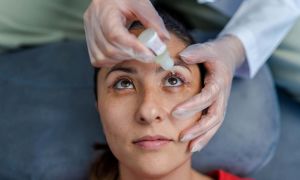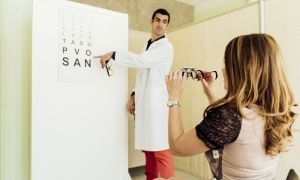Advertisement
Infantile esotropia, where the eye turns inward, is the most common type of strabismus in infants.
Young children with esotropia cannot use their eyes together. In most cases, early surgery can align the eyes.
Accommodative esotropia is a common form of esotropia that occurs in children usually 2 years or older. In this type of strabismus, when the child focuses the eyes to see clearly, the eyes turn inward.
This crossing may occur when focusing at a distance, up close or both.
Glasses reduce the focusing effort and often straighten the eyes. Sometimes bifocals are needed for close work. If significant crossing of the eyes persists with the glasses, surgery may be required.
Exotropia, or an outward-turning eye, is another common type of strabismus. This occurs most often when a child is focusing on distant objects.
The exotropia may occur only from time to time, particularly when a child is daydreaming, ill or tired. Parents often notice that the child squints one eye in bright sunlight.
Although glasses, exercises, patching or prisms may reduce or help control the outward turning eye in some children, surgery is often needed.
Young children with esotropia cannot use their eyes together. In most cases, early surgery can align the eyes.
Accommodative esotropia is a common form of esotropia that occurs in children usually 2 years or older. In this type of strabismus, when the child focuses the eyes to see clearly, the eyes turn inward.
This crossing may occur when focusing at a distance, up close or both.
Glasses reduce the focusing effort and often straighten the eyes. Sometimes bifocals are needed for close work. If significant crossing of the eyes persists with the glasses, surgery may be required.
Exotropia, or an outward-turning eye, is another common type of strabismus. This occurs most often when a child is focusing on distant objects.
The exotropia may occur only from time to time, particularly when a child is daydreaming, ill or tired. Parents often notice that the child squints one eye in bright sunlight.
Although glasses, exercises, patching or prisms may reduce or help control the outward turning eye in some children, surgery is often needed.
Continue Learning about Eye and Vision
Important: This content reflects information from various individuals and organizations and may offer alternative or opposing points of view. It should not be used for medical advice, diagnosis or treatment. As always, you should consult with your healthcare provider about your specific health needs.




